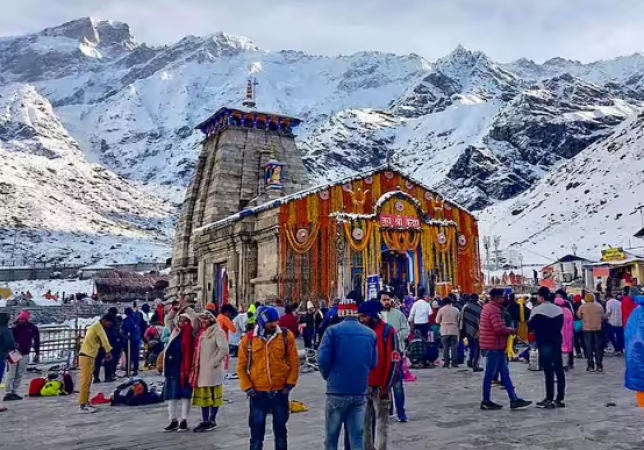
Kedarnath Temple, nestled amidst the scenic Himalayas in the Indian state of Uttarakhand, holds immense spiritual significance for millions of devotees worldwide. It is one of the holiest pilgrimage sites for Hindus and is dedicated to Lord Shiva, one of the principal deities in the Hindu pantheon. The temple's rich history, architectural marvel, and the unique rituals followed in its worship make it a revered destination for spiritual seekers. In this article, we will delve into the captivating history of Kedarnath and explore the methods and rituals of worship performed in this sacred temple.
History of Kedarnath:
Kedarnath finds mention in several ancient Hindu texts and legends, dating back centuries ago. According to mythology, the temple's origin can be traced to the time of the great epic, Mahabharata. It is believed that after the Kurukshetra war, the Pandavas sought Lord Shiva's blessings to absolve themselves of the sins committed during the battle. Lord Shiva, wanting to evade them, assumed the form of a bull and took refuge in Kedarnath.
Another popular legend associated with the temple is the story of Adi Shankaracharya, an eminent 8th-century philosopher and theologian. Adi Shankaracharya is said to have rediscovered the Kedarnath Temple and established it as one of the twelve Jyotirlingas, which are considered the most sacred abodes of Lord Shiva. His influence played a pivotal role in popularizing the temple and establishing it as a revered pilgrimage site.
Architecture and Design:
The architectural grandeur of Kedarnath Temple reflects a harmonious blend of traditional Himalayan and Dravidian architectural styles. The temple stands at an elevation of 3,583 meters (11,755 feet) above sea level and is constructed using large stone slabs and timber beams. The temple's main sanctum houses the ancient Shiva lingam, a symbolic representation of Lord Shiva, and is surrounded by intricately carved walls and pillars.
Worship Rituals:
The worship rituals at Kedarnath Temple are conducted with great reverence and adhere to ancient traditions. The temple remains open only for a limited period each year, from late April to early November, due to extreme weather conditions in the region. During the rest of the year, the idol of Lord Shiva is shifted to Ukhimath, where it is worshipped.
Devotees visiting the Kedarnath Temple embark on a rigorous trek through picturesque landscapes, braving harsh terrains and inclement weather. Upon reaching the temple, pilgrims participate in various rituals, including Rudrabhishek (anointing the Shiva lingam with holy substances), Aarti (a prayer ceremony with oil lamps), and Bhajans (devotional singing). The atmosphere reverberates with the chants of sacred hymns and echoes of devotees seeking divine blessings.
Significance and Festivals:
Kedarnath Temple holds immense spiritual significance for Hindus. It is believed that a visit to this sacred shrine can absolve one of their sins and grant liberation from the cycle of birth and death. The temple is also an integral part of the Chota Char Dham Yatra, a pilgrimage circuit that includes Yamunotri, Gangotri, and Badrinath, and is considered a transformative journey for spiritual seekers.
Several festivals are celebrated at Kedarnath Temple throughout the year, adding to its vibrancy and allure. The most prominent festival is Maha Shivaratri, a grand celebration dedicated to Lord Shiva, which attracts thousands of devotees from all corners of the globe. The festival involves special rituals, night-long vigils, and a profound sense of devotion, creating an ethereal atmosphere around the temple premises.
Kedarnath Temple stands as a testament to the enduring faith and devotion of millions of devotees who embark on a spiritual journey to seek the blessings of Lord Shiva. Its captivating history, awe-inspiring architecture, and divine atmosphere make it an unparalleled destination for those seeking spiritual solace. The rituals and traditions followed in the temple reflect the ancient wisdom and customs that have been passed down through generations. Kedarnath Temple continues to inspire and uplift the souls of all who visit, leaving an indelible mark on their spiritual journey.
Know about the roots of the ancient religion of India
Gomateshwara Temple: Monolithic Statues
The Significance of Bells in Temples: Unveiling Their Musical Charm